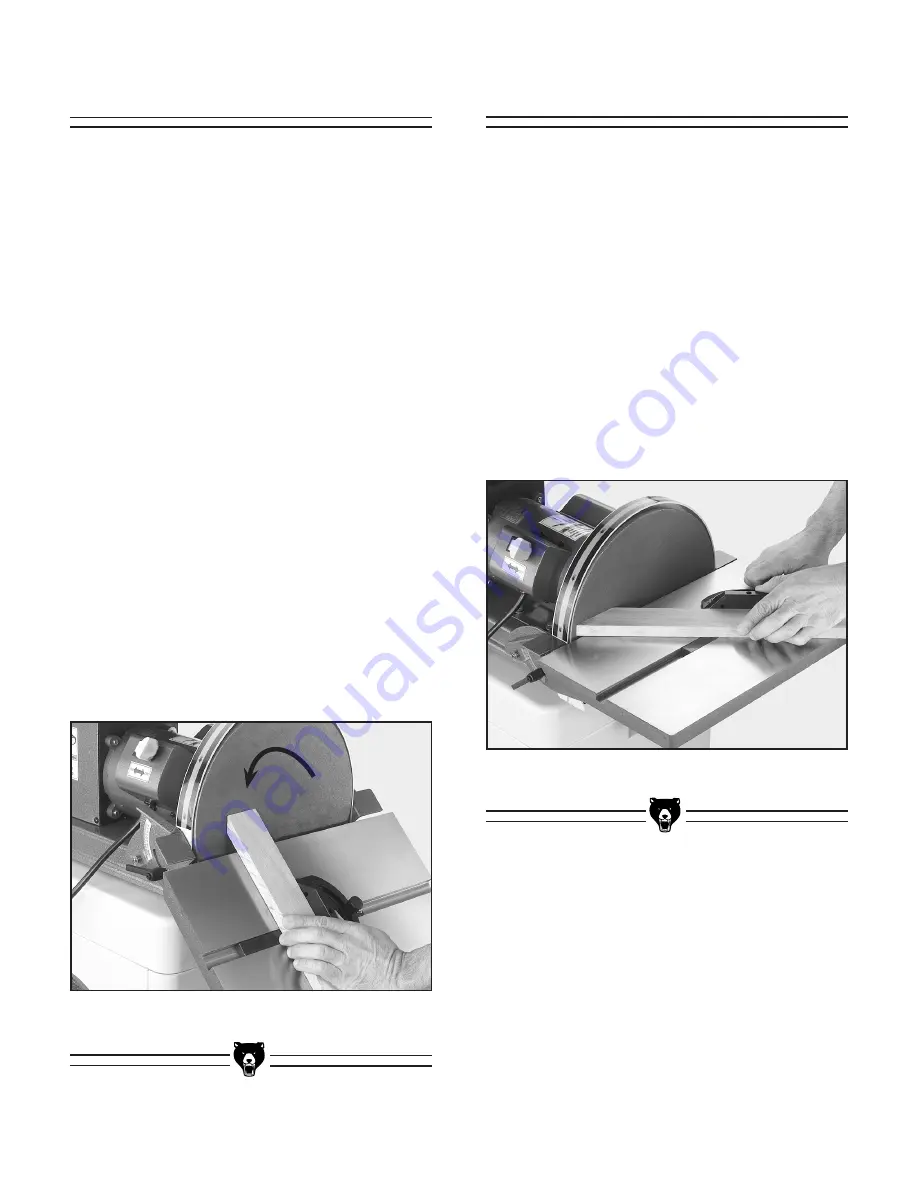
g0529 oscillating Spindle & disc Sander
-19-
disc sanding
to perform disc sanding operations:
1.
Set the angle of the table relative to the
sanding disc. the angle can be set with the
angle gauge on the disc sander or with a
protractor for greater accuracy.
note—
The disc table can be positioned from
0˚ to 45˚, relative to the plane of the sanding
surface.
2.
once the desired table angle has been set,
move the table towards the sanding disc to
decrease the gap between the table and the
disc. the gap should be
1
⁄
16
".
3.
to sand straight edges, firmly hold the side
of workpiece against the miter gauge (set at
0˚), with the other surface against the face of
the disc (
figure 18
).
note—
For sanding curves or irregular
shapes, remove the miter gauge from the
disc table. Always keep the workpiece on the
side of the wheel that is rotating down toward
the table. This will keep the workpiece from
flying out of your hands from the rotational
forces.
miter sanding
the most efficient way to get a perfect miter is to
cut the workpiece slightly long and sand it to the
desired dimension. Miter sanding can be done
easily with the miter gauge:
to perform miter sanding operations:
1.
loosen the knob on the miter gauge, adjust
the angle to the desired point, and tighten the
knob.
2.
Slide the miter gauge into its slot and use it
to hold your workpiece in position (
figure
19
). note—
The miter gauge can be used in
either direction in the slot to achieve the
proper relation of the workpiece to the disc.
figure 19
. disc sanding with table tilted.
figure 20
. disc sanding with miter.
















































